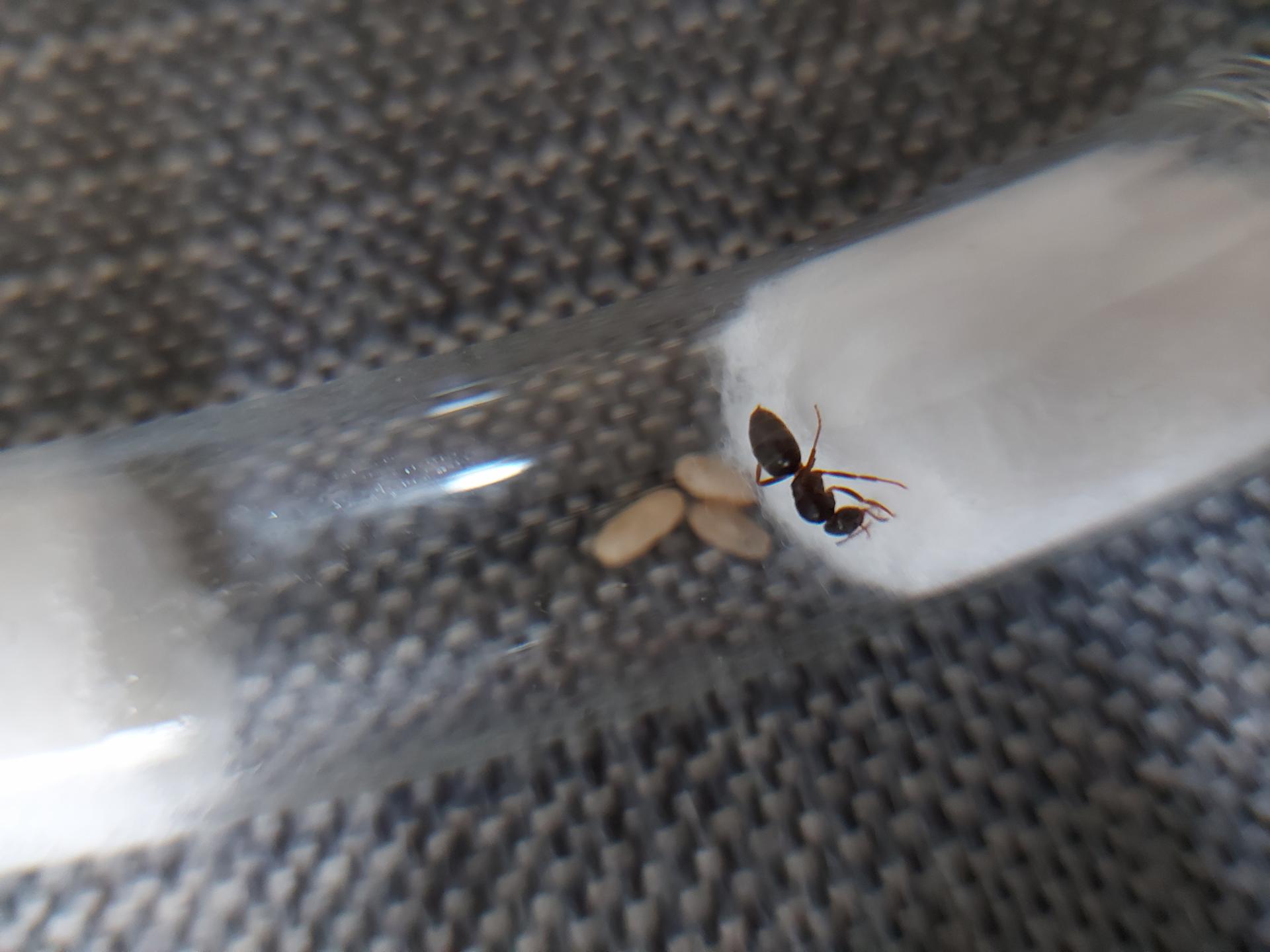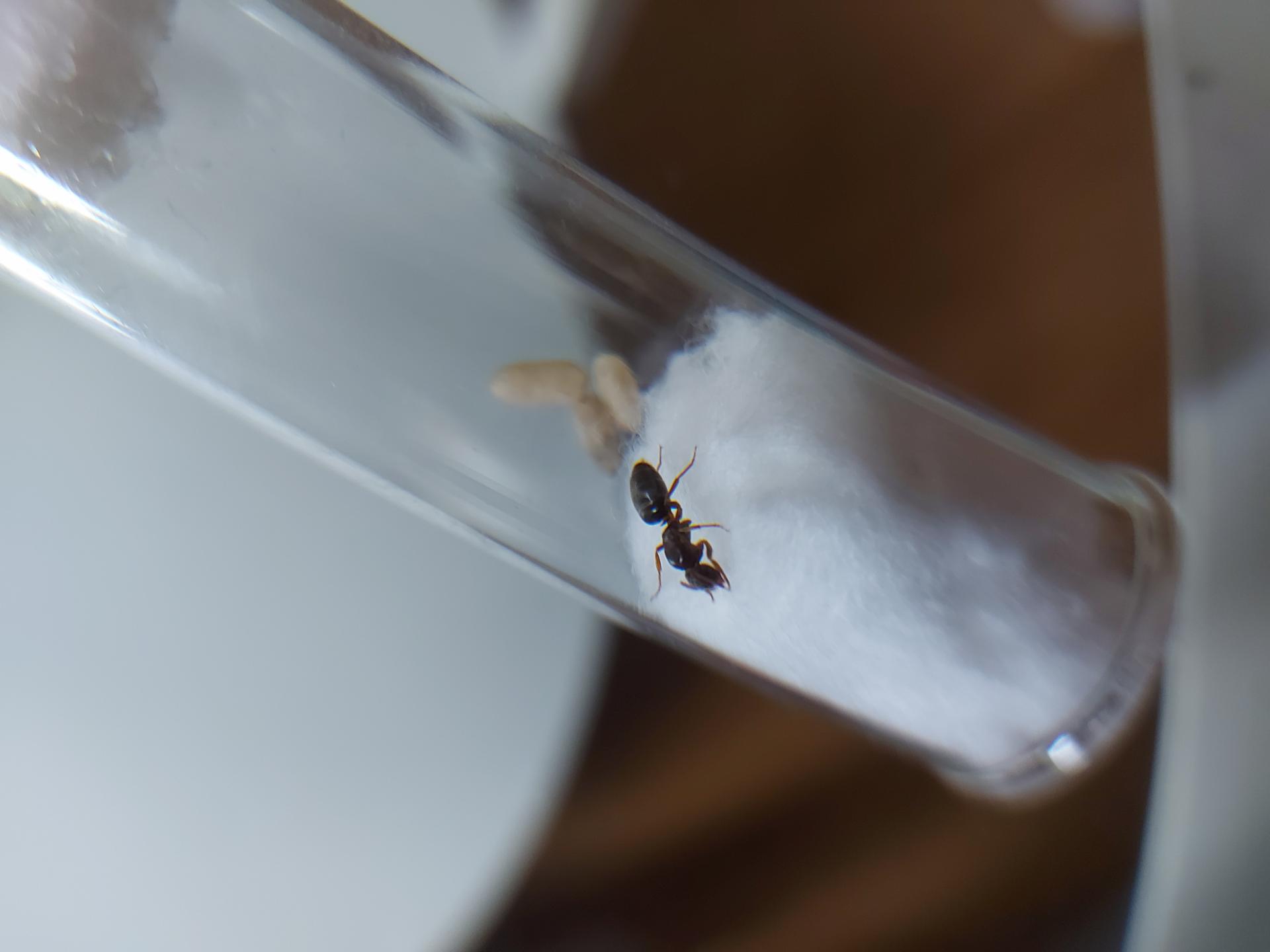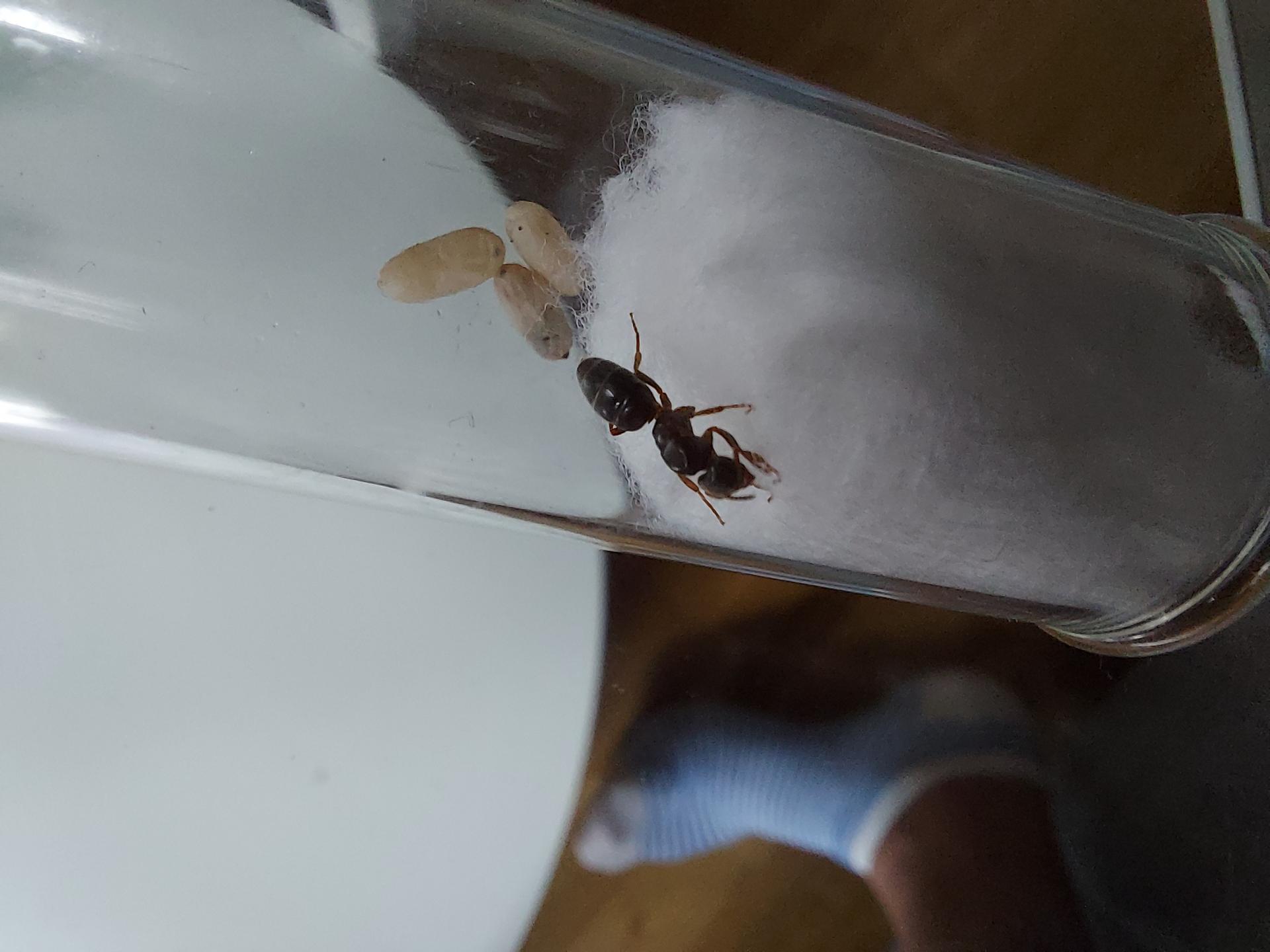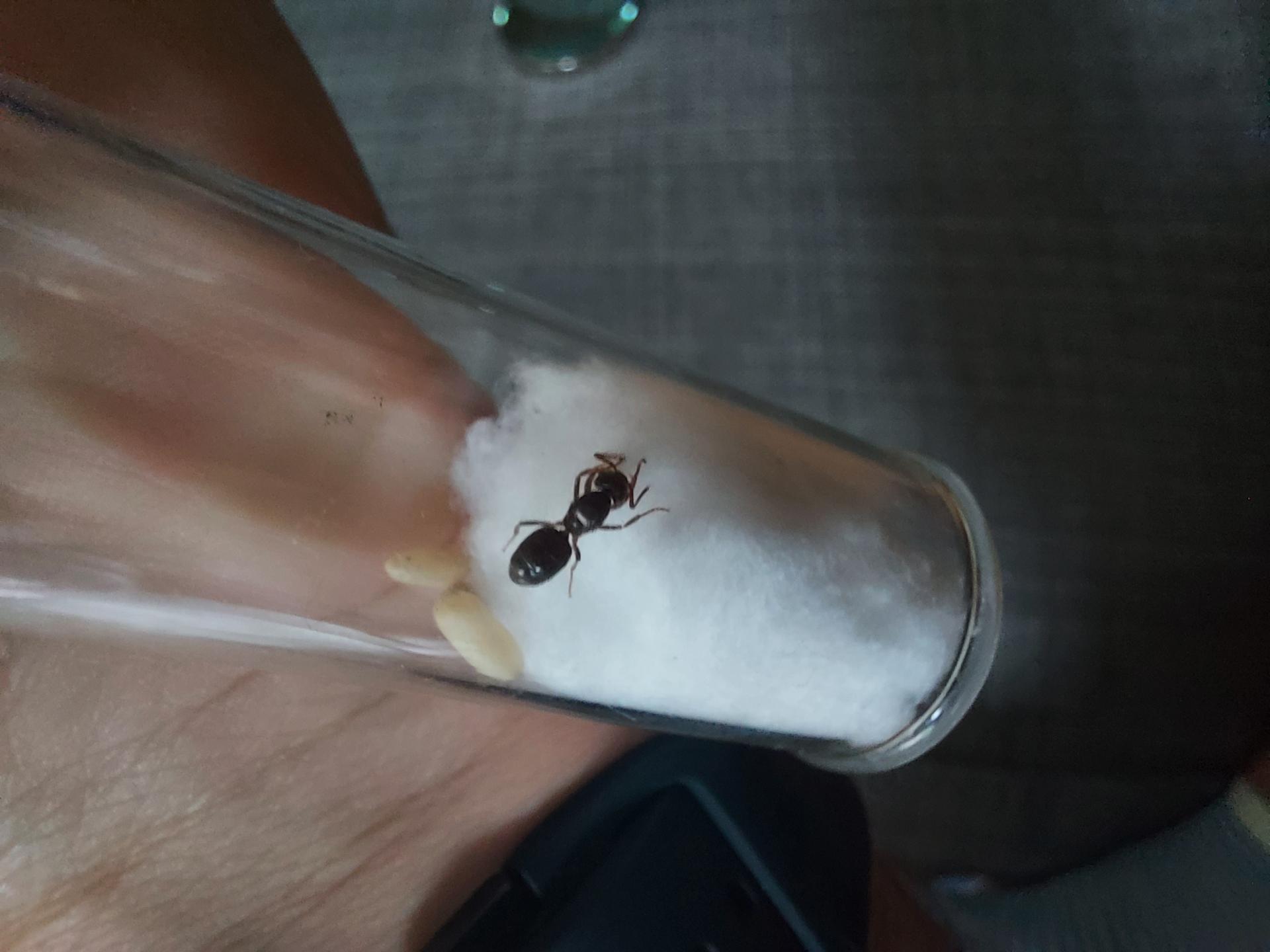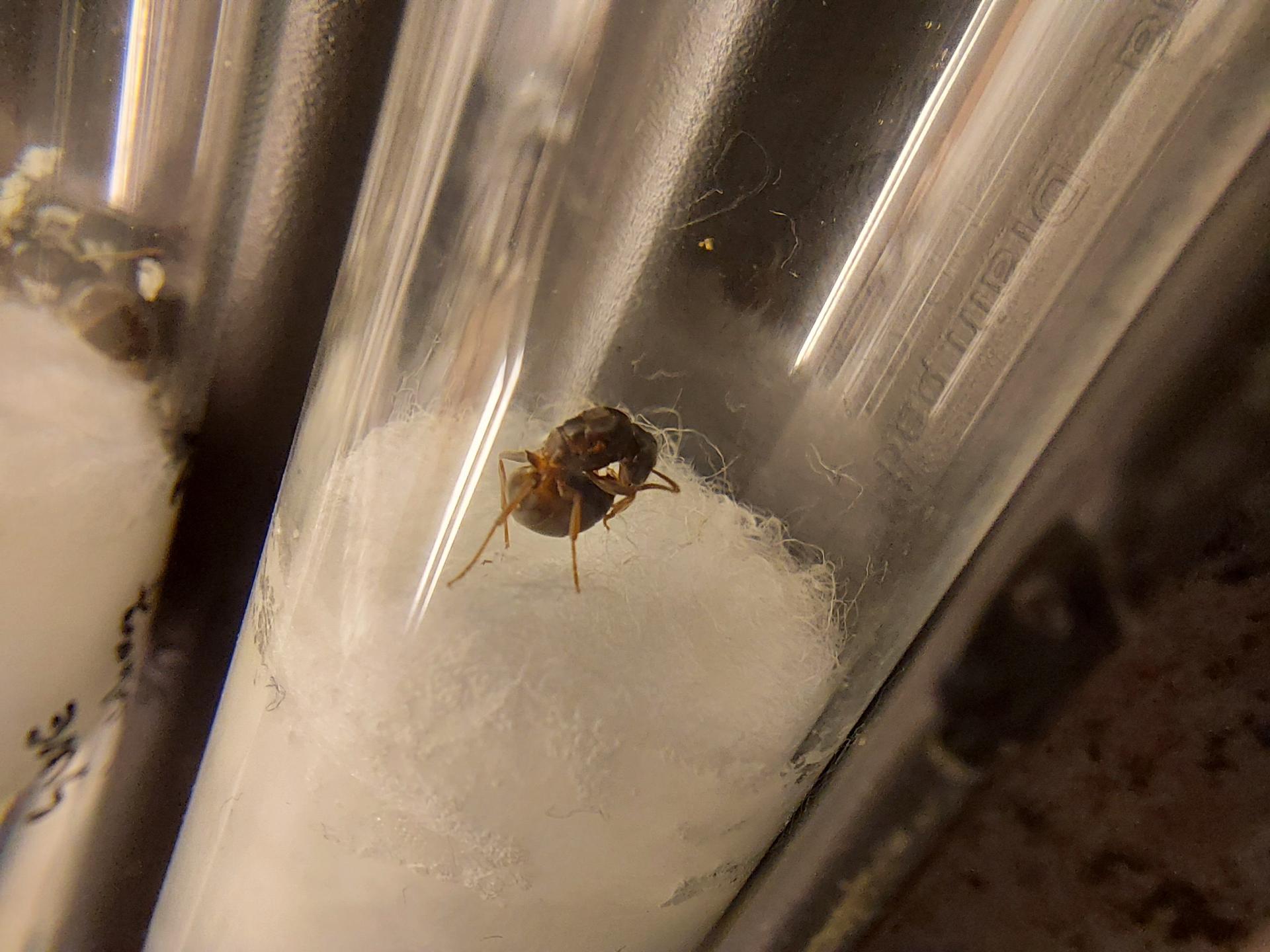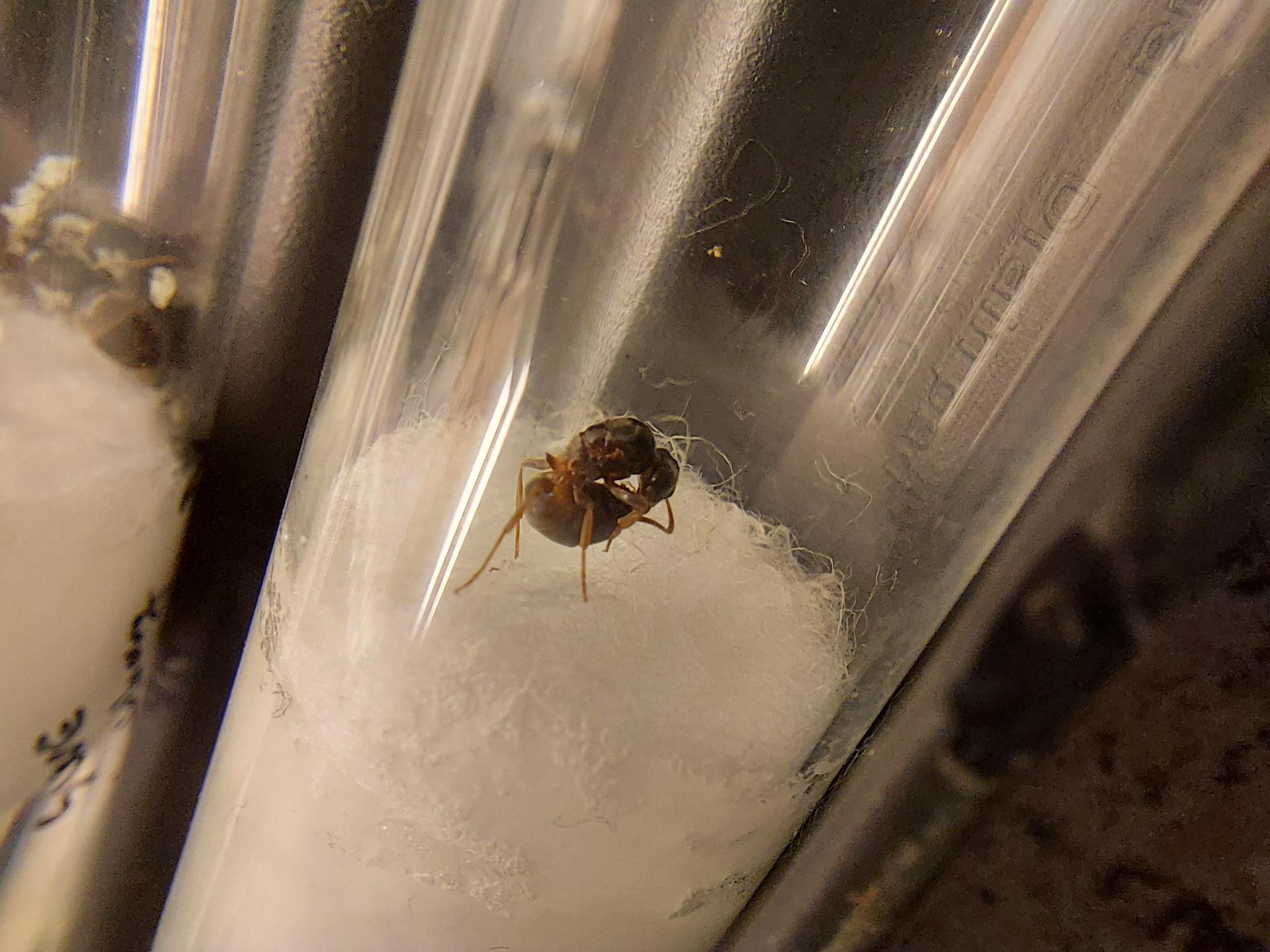- Formiculture.com
- Forums
- Gallery
- Members
- Member Map
- Chat
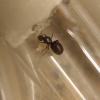
Formica or Lasius ? Does not lay eggs, does not open pupae and constantly tries to escape
Started By
Ajoe92
, Aug 27 2022 3:39 AM
7 replies to this topic
#1
 Offline
-
Posted August 27 2022 - 3:39 AM
Offline
-
Posted August 27 2022 - 3:39 AM
Hi guys,
I just joined ant keeping this summer. I got a few L.niger and flavus and few days ago I found this other ant queen which I suspect is a formica. Location was Stockholm, close to a small forest surrounding a lake, late afternoon.
However she's only trying to escape, has not layed any eggs but has accepted some honey. I thought it could be a social parasite or enslaving type but she does not accept some pupae I threw in that I found outside last week - she smelled them for 3-4 seconds then resumed the escape plan. I'm going to call her Michele Scoeffield 😅
It would be cool if it's a F.suecica but I do not see any pictures of queens of this species. It could also be a L.meridionalis? Hope someone knows so I will know how to tend to her needs and have a new species in my collection!
Best wishes,
A
I just joined ant keeping this summer. I got a few L.niger and flavus and few days ago I found this other ant queen which I suspect is a formica. Location was Stockholm, close to a small forest surrounding a lake, late afternoon.
However she's only trying to escape, has not layed any eggs but has accepted some honey. I thought it could be a social parasite or enslaving type but she does not accept some pupae I threw in that I found outside last week - she smelled them for 3-4 seconds then resumed the escape plan. I'm going to call her Michele Scoeffield 😅
It would be cool if it's a F.suecica but I do not see any pictures of queens of this species. It could also be a L.meridionalis? Hope someone knows so I will know how to tend to her needs and have a new species in my collection!
Best wishes,
A
#2
 Offline
-
Posted August 27 2022 - 5:26 AM
Offline
-
Posted August 27 2022 - 5:26 AM
Looking at the size of her head that's a social parasite, probably Lasius fuliginosus or something closely related.
She likely needs host workers as she's unable to open cocoons by herself.
Edited by Serafine, August 27 2022 - 5:28 AM.
We should respect all forms of consciousness. The body is just a vessel, a mere hull.
Welcome to Lazy Tube - My Camponotus Journal
#3
 Offline
-
Posted August 27 2022 - 5:41 AM
Offline
-
Posted August 27 2022 - 5:41 AM
Thank you Serafine! I did read that about Lasius social parasites, not being able to open cocoons.Looking at the size of her head that's a social parasite, probably Lasius fuliginosus or something closely related.
She likely needs host workers as she's unable to open cocoons by herself.
How long would you say she can survive like this?
Perhaps I should consider raiding a flavus nest and steal some young workers for her...
I have a L.niger queen that is a few days to 1-2 weeks max away from first nanitics and a lot of L.flavus colonies that are probably 3-5 weeks away from nanitics.
I also have tubes with 2-4 flavus queens, perhaps those nests will grow faster.
Would Michele Scoffield face a tougher fate to go against 2+ queens? Do they kill the host?
I also read that as rule of thumb, Lasius queens have the smallest head while Formica queens have heads that are at least as wide as their thorax. Based on this she seems like a Formica.
Sent from my SM-A715F using Tapatalk
#4
 Offline
-
Posted August 27 2022 - 6:31 AM
Offline
-
Posted August 27 2022 - 6:31 AM
A Lasius parasite indeed, but definitely not L. fuliginosus or similar. This one is Lasius (Chthonolasius) / Lasius umbratus-group. If you haven't seen it already, this is a good guide to Lasius parasites: https://www.formicul...cial-parasites/
I also read that as rule of thumb, Lasius queens have the smallest head while Formica queens have heads that are at least as wide as their thorax. Based on this she seems like a Formica.
That rule of thumb works for claustral Lasius species, but not parasitic species, which have a wider head.
- Ajoe92 likes this
#5
 Offline
-
Posted August 27 2022 - 9:33 AM
Offline
-
Posted August 27 2022 - 9:33 AM
You will need to give her callow (newly eclosed) lasius workers, which are characterized by their pale color. Once she has accepted those you can toss in some pupae as unlike the queen the callows are able to open them.
My journals:
Polyergus Mexicanus: https://www.formicul...gs/#entry175528
Lasius minutus: https://www.formicul...cs/#entry174811
Lasius latipes: https://www.formicul...gs/#entry206449
General acanthomyops journal: https://www.formicul...yops-with-eggs/
Polyergus Mexicanus: https://www.formicul...gs/#entry175528
Lasius minutus: https://www.formicul...cs/#entry174811
Lasius latipes: https://www.formicul...gs/#entry206449
General acanthomyops journal: https://www.formicul...yops-with-eggs/
#6
 Offline
-
Posted August 27 2022 - 10:37 AM
Offline
-
Posted August 27 2022 - 10:37 AM
Callows help, but aren't strictly necessary. Though if you use mature workers, you will need to get more as the queen will kill the first few of them at to get their scent.
#7
 Offline
-
Posted August 29 2022 - 11:04 AM
Offline
-
Posted August 29 2022 - 11:04 AM
I managed to get the queen to accept 4 workers of L. flavus. I couldn't find brood just workers.
She did kill the first 3 but now she is much calmer.
I connected another tube with 6-7 more workers. Hope she will accept them easier.
I will give her brood from my many L. flavus queens as soon as they pupate. I only have laravae now.
I tried giving her and the workers a few eggs and a laravae but it was too soon. They ignore them for now.
Question: can I give her and her flavus workers some L. niger brood instead?
Has anyone managed to get a mixed colony like that? My L. niger queens are a couple of weeks ahead of my flavus colonies.
Sent from my SM-A715F using Tapatalk
She did kill the first 3 but now she is much calmer.
I connected another tube with 6-7 more workers. Hope she will accept them easier.
I will give her brood from my many L. flavus queens as soon as they pupate. I only have laravae now.
I tried giving her and the workers a few eggs and a laravae but it was too soon. They ignore them for now.
Question: can I give her and her flavus workers some L. niger brood instead?
Has anyone managed to get a mixed colony like that? My L. niger queens are a couple of weeks ahead of my flavus colonies.

Sent from my SM-A715F using Tapatalk
#8
 Offline
-
Posted August 29 2022 - 11:36 AM
Offline
-
Posted August 29 2022 - 11:36 AM
Update:
I have found wild brood of L. niger. I will attempt the adoption once my queen accepts the new flavus workers.
Wish me luck!
Sent from my SM-A715F using Tapatalk
I have found wild brood of L. niger. I will attempt the adoption once my queen accepts the new flavus workers.
Wish me luck!
Sent from my SM-A715F using Tapatalk
1 user(s) are reading this topic
0 members, 1 guests, 0 anonymous users



